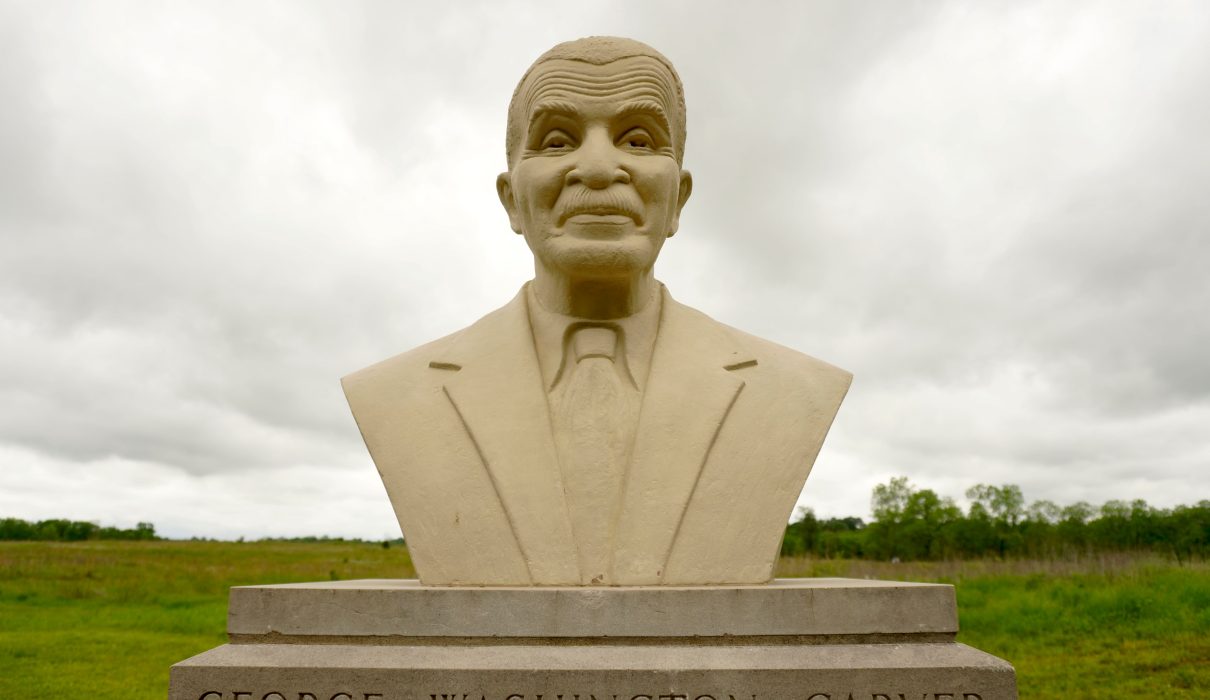It’s a peaceful spot, tucked into the beauty of the Missouri Botanical Gardens. George Washington Carver would approve of the Carver Garden, while gently reminding us of his simple prescription for healthy plants.
It’s understandable that in America’s fast-food appetite for history, we know little more than peanuts about George Washington Carver. In too many instances, America’s collective knowledge about our icons gets boiled down to the substance of a slogan.
Nuts to that.
Carver was a trailblazer in agriculture, education, ecology and life.
If you’re looking for a field trip weekend with the children, head west down Route 66. Southeast of Joplin, on a farm outside tiny Diamond, Missouri, a national monument celebrates the life of one of America’s greatest thinkers, inventors and humanitarians. As far as national monuments, this pastoral site doesn’t get the face time of Mt. Rushmore or the traffic of the Grand Canyon. But this birthplace of the grandfather of green is a hands-on gold mine of pure genius.
He was born a slave, who grew to become America’s preeminent recycler, its patron saint of sustainable agriculture, and along the way, its social conscience. His name is no less impactful than John Muir or Teddy Roosevelt or Rachel Carson.
School children have a wonderful opportunity to discover Carver’s reach. On this gold mine of a Diamond farm, the George Washington Carver National Monument — the oldest of six national parks/sites in Missouri — has been dusted off, spiffed up and packed with enough common sense to save the world, compliments of Carver. In the middle of a restored prairie, the monument offers equal parts Carver science, Carver care and Carver lifestyle.
Sure, he developed 300 uses for the lowly-regarded peanut, including paper and ink, gasoline and shampoo, insecticide and nitroglycerin. Perhaps more important, he showed that by planting peanuts in rotation with cotton, the peanut plant actually introduced nutrients back into the soil. Carver’s novel idea to rotate the peanut crop with cotton had a beneficial side effect: it dealt a blow to the boll weevil’s devastating grip on the cotton field economy.
No, he didn’t invent peanut butter. I think Elvis did that. But Carver did develop 70 uses for pecans and 300 colored paints from clay. He made synthetic marble from wood pulp, paint from used motor oil, athlete’s foot medicine from persimmons, paving bricks from cotton and stamp glue from sweet potato starch. He made clothing from sweet potatoes, medicine from pine needles and fuel from corn.
If you want to flip the switch on your young student’s creativity — or your own — visit this monument to Carver, including a replica classroom based on young George’s Neosho school experience, with McGuffey Readers and small slate blackboards at each seat.
Visitors get a hands-on experience in the Carver laboratory, an exact replica of Carver’s classroom at the Tuskegee Institute, complete with sinks and beakers and all the tools necessary to participate in science. Throughout the exhibits, your kids have hands-on opportunities to look through microscopes and conduct experiments.
Carver made it a lifelong practice to demonstrate creative uses for things people normally throw in the garbage. As such, Carver became America’s foremost recycler.
He believed that nothing around the house should be discarded if it could be used. He warned that destroying usable items was a lack of vision. “And where there is no vision,” he said, “people perish.”
“Everything on Earth has a purpose,” he told students.
At the center of his soul, this complex man has a very simple philosophy of life, best reflected in his two-word prescription for growing healthy plants.
“Love them.”


